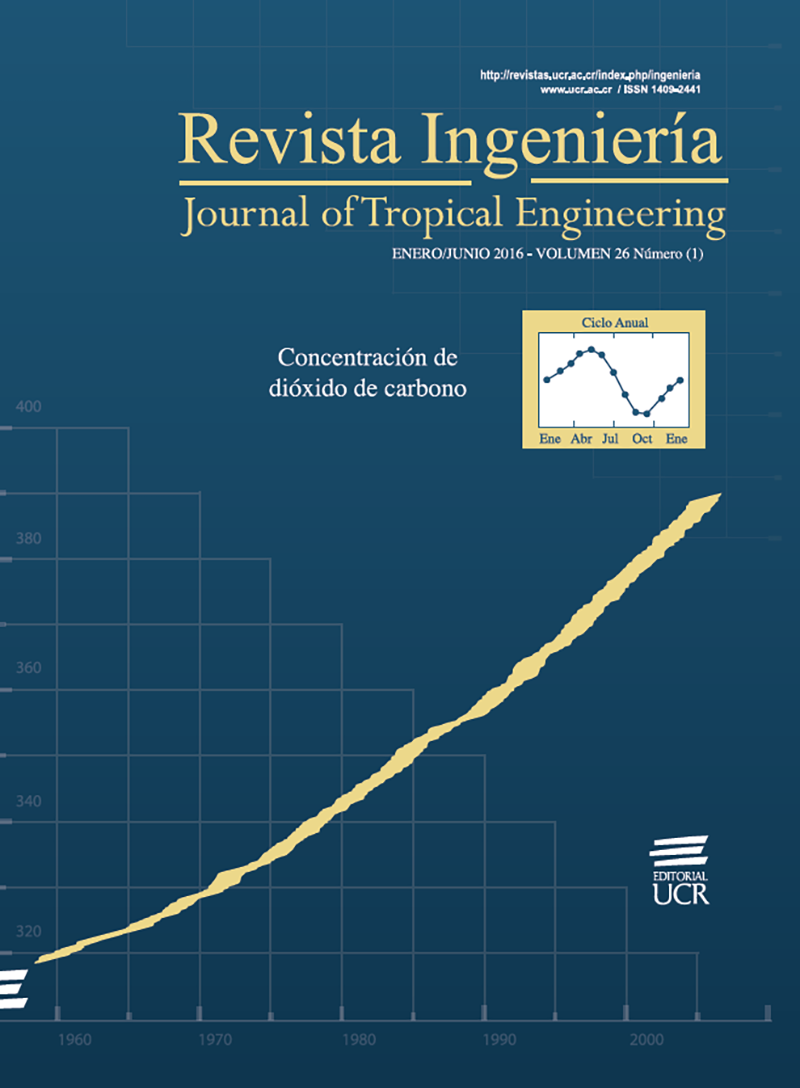Resumen
Los organismos polinizadores desempe~nan un rol fundamental en la agricultura y consecuentemente en la seguridad alimentaria en America tropical. Debido a las alteraciones ambientales inducidas por el cambio climatico, una variedad de especies de polinizadores se encuentra actualmente en disminucion, lo cual tiene importantes implicaciones para los ecosistemas tanto naturales como agrcolas. Es probable que la \crisis de los polinizadores" afecte a la produccion y los costos de ciertos cultivos contribuyendo con desequilibrios alimentarios y problemas de salud en los pases de la region. Ante esta problematica, es imprescindible llevar a cabo estudios que mejoren nuestra comprension sobre las relaciones planta{polinizador en cultivos agrcolas, ademas de implementar estrategias orientadas a revertir la declinacion de las poblaciones de polinizadores. De que manera el cambio climatico afectara la produccion agrcola y la seguridad alimentaria en America tropical dependera en gran medida de como las interacciones planta{polinizador se vean infuenciadas.Citas
Sala OE. Global biodiversity scenarios for the year 2100. Science. 2000;
:1770–1774.
Thomas CD, Cameron A, Green RE, Bakkenes M, Beaumont LJ, et al. Extinction risk from climate change. Nature. 2000; 427:145–148.
Beaumont LJ, Pitman A, Perkins S, Zimmermann NE, Yoccoz NG, et al. Impacts of climate change on the world’s most exceptional ecoregions. Proceedings of the National Academy of Sciences. 2011; 108:2306–2311.
Bascompte J, Jordano J. Mutualistic Networks. Monographs in Population Biology Series, Princeton: Princeton University Press; 2014.
Waser NM, Ollerton J. Plant–Pollinator interactions from specialization to generalization. Chicago: University of Chicago Press; 2000.
Kevan, PG, Phillips TP. The economic impacts of pollinator declines: an approach to assessing the consequences. Conservation Ecology. 2007; 5:8.
Inouye, DW, Pyke GH. Pollination biology in the snowy mountains of Australia: comparisons with montane Colorado, USA. Australian Journal of
Ecology. 1998; 13:191–205.
Bronstein JL. Mutualism, diversity, and diversification. Smithsonian
Botanical Symposium. Botany Profile. The plant press. 2008; 11 (3), 11.
Ramsey MW. Differences in pollinator effectiveness of birds and insects
visiting Banksia menziesii (Proteaceae). Oecologia. 1998; 76:119–124.
Castellanos MC, Wilson P, Thomson JD. Pollen transfer by hummingbirds and bumblebees, and the divergence of pollination modes in Penstemon. Evolution. 2003; 57:2742–2752.
Pantoja A, Smith-Pardo A, García A, Sáenz A, Rojas A. Principios y avances sobre polinizaci ́on como servicio ambiental para la agricultura sostenible en países de Latinoamérica y el Caribe. Santiago: Organización de las Naciones Unidas para la Alimentación y la Agricultura – FAO; 2014.
The Economics of Ecosystems and Biodiversity (TEEB). Resumen ejecutivo. En: Informe sobre la econom ́ıa de los ecosistemas y la biodiversidad para las empresas. Malta: The Economics of Ecosystems and Biodiversity (TEEB); 2010.
Batra SW. Abejas solitarias. Investigación y Ciencia. 1984; 91:78–86.
Food and Agriculture Organization of the United Nations (FAO). Los
polinizadores: su biodiversidad poco apreciada, pero importante para la alimentación y la agricultura. T ́unez: Food and Agriculture Organization of the
United Nations; 2008.
Klein AM, Vaissi`ere BE, Cane JH, Steffan-Dewenter I, Cunningham SA, et al. Importance of pollinators in changing landscapes for world crops. The Proceedings of the Royal Society of London. 2006; Series B: 274:303–313.
Ollerton J, Winfree R, Tarrant S. How many flowering plants are pollinated by animals? Oikos. 2011; 120:321–326.
Vanbergen AJ. Threats to an ecosystem service: pressures on pollinators. Frontiers in Ecology and the Environment. 2013; 11:251–259.
Almanza MT. Management of Bombus atratus bumblebees to pollinate lulo (Solanum quitoense), a native fruit from the Andes of Colombia. Ecology and Development Series. 2007; 50.
Malavolta E. Nutrición y Fertilización del Maracuyá. San Paulo: CENA– Piracicaba; 1994.
Coca C, Nates G, Ospina G, Melo GD, Amaya-Márquez M. Biología
floral y reproductiva de la gulupa Passiflora edulis sims F. edulis. Caldasia.
; 33:433–451.
Aldana J, Cure JR, Almanza MT, Vecil D, Rodríguez D. Efecto de
Bombus atratus (Hymenoptera: Apidae) sobre la productividad de tomate
(Lycopersicon esculentum Mill.) bajo invernadero en la Sabana de Bogotá,
Colombia. Agronom ́ıa Colombiana. 2007; 25:62–72.
Peña JE. Insectos polinizadores de cultivos tropicales: no solo las abejas llevan la miel al panal. Manejo aplicado de plagas y agroecología. CATIE. 2003; 69:6–20.
Ricketts TH. Tropical forest fragments enhance pollinator activity in nearby coffee crops. Conservation Biology. 2004; 18:1262–1271.
Lumpkin T, Weinberger AK, Moore S. Increasing income through fruit and vegetable production opportunities and challenges. Marrakech: CGIAR Science Council paper; 2006.
Visser ME, Both C. Shifts in phenology due to global climate change: the need for a yardstick. Proceedings of the Royal Society of London B. 2005; 272:2561–2569.
Butt N, Seabrook L, Maron M, Law BS, Dawson TP, et al. Cascading effects of climate extremes on vertebrate fauna through changes to low latitude tree flowering and fruiting phenology. Global Change Biology. 2015; 21:3267–3277.
Fogden M, Fogden P. Hummingbirds of Costa Rica. Miami: Zona Tropical; 2005
Parmesan, C Yohe G. A globally coherent fingerprint of climate change impacts across natural systems. Nature. 2003; 421:37–42.
Root TL, Price JT, Hall KR, Schneider SH, Rosenzweig C, et al. Fingerprints of global warming on wild animals and plants. Nature. 2003; 421:57–60.
Dunn P. Breeding dates and reproductive performance. Advances in
Ecological Research. 2004; 35:67–86.
Bartomeus I, Ascher JS, Wagner D, Danforth BN, Colla SR, et al. Climate–associated phenological advances in bee pollinators and bee–pollinated plants. Proceedings of the National Academy of Sciences. 2011; 108:20645–20649.
Kjøhl, M, Nielsen A, and Stenseth NC. Potential effects of climate change on crop pollination. Rome: Food and Agriculture Organization of the United Nations; 2011
Allen-Wardell G, Bernhardt P, Bitner R, Burquez A, Buchmann S, et al. The potential consequences of pollinator declines on the conservation of biodiversity and stability of food crop yields. Conservation Biology. 1998;
:8–17.
Buchmann SL, Nabhan GP. The forgotten pollinators. Washington DC: Island Press; 1996.
Kevan PG. and Viana BF. The global decline of pollination services. Conservation Ecology. 2003; 4:3–8.
Shepherd M, Buchmann S, Vaughan M, Hoffman S. Pollinator Conservation Handbook: A guide to understanding, protecting, and providing habitat for native pollinator insects. Portland: The Xerces Society; 2003.


